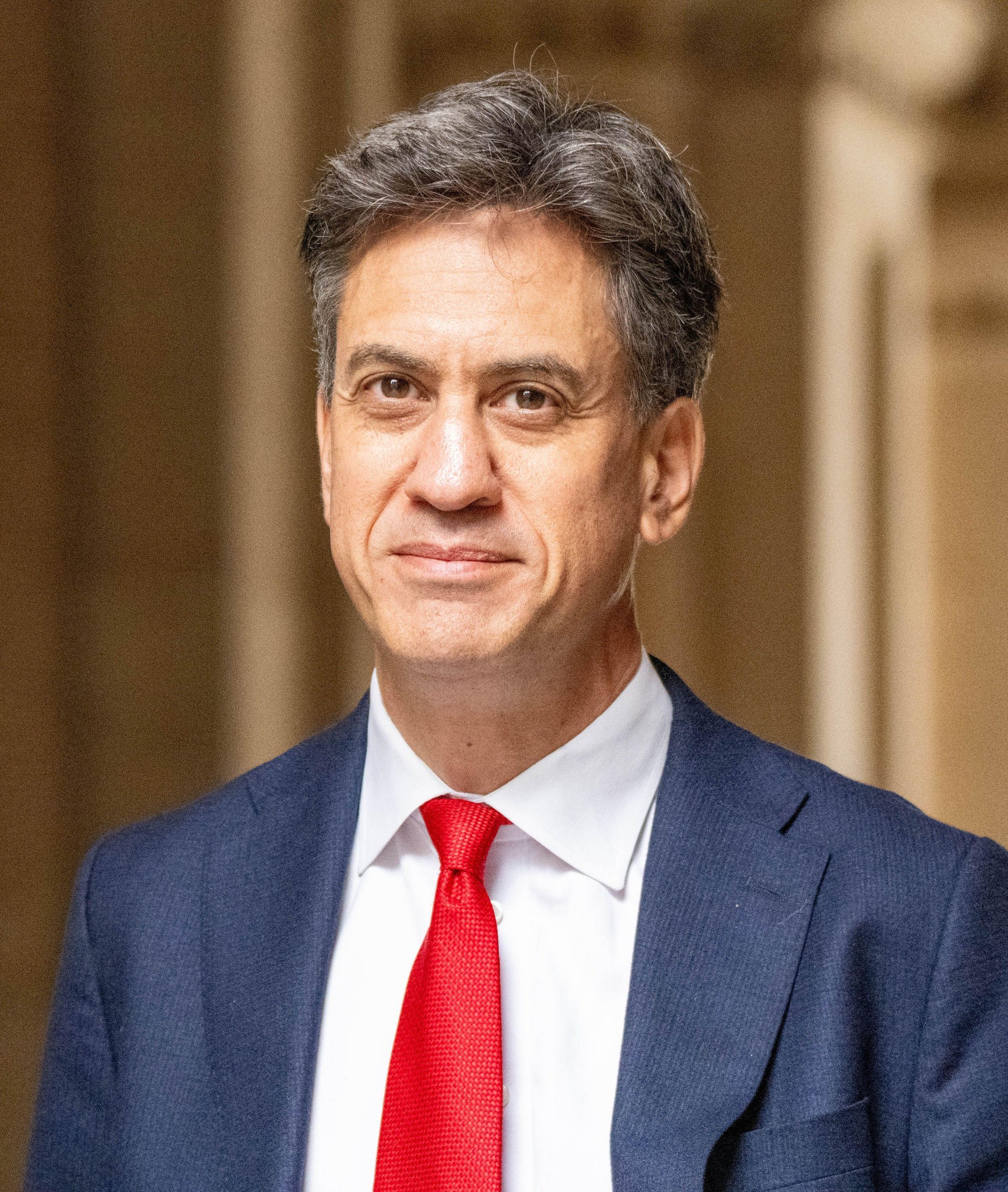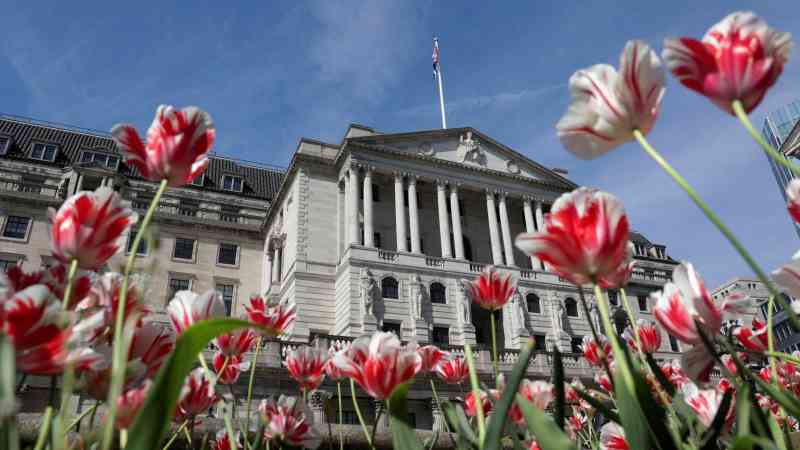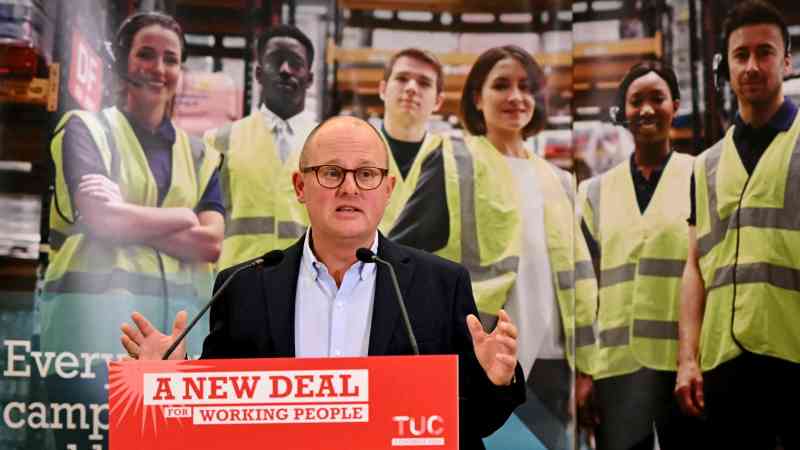How the energy price cap can be made fit for purpose
When Ed Miliband first put forward the idea of a temporary freeze on energy bills as leader of the opposition in 2013, he was ridiculed by David Cameron, then prime minister, as wanting to live in a “Marxist universe”.
The energy price cap eventually introduced by Theresa May’s Conservative government six years later was a market intervention in the same spirit, designed to prevent companies ripping off loyal customers by ensuring they were charged a fair price.
Even if the concept of price controls is now considered less radical, as Miliband — now the energy secretary — faces the task of evolving the price cap, which critics argue is too rigid in its present form.
As the grid becomes more dominated by greener, yet intermittent, types of energy, there is a concern that a flat price cap, which dictates customer bills, does not incentivise consumers to shift consumption to times when supply is most plentiful and wholesale prices cheaper. Fuel poverty campaigners and other industry experts have also pointed towards the rapid rise in energy debt as proof that the cap has failed to protect the most vulnerable households while prices have soared.
Introduced in 2019, the price cap limits how much suppliers can charge customers per unit of gas or electricity, and is based on the underlying costs of providing energy, for those on default or standard variable tariffs. It was designed to eliminate the so-called loyalty penalty, levied against customers charged more for not shopping around.
The energy crisis sparked by the war in Ukraine has intensified debate about whether the structure of the price cap is fit for purpose. When gas prices soared, the price cap was credited with providing households and businesses with a degree of clarity about how much they could expect to pay, however egregious, and shielding them against an even worse jump in their energy costs.
As bills jumped to historic highs, millions of households have struggled. Arrears have risen to a record £3.3 billion, according to Ofgem’s latest figures, a £1.1 billion increase in just a year in outstanding debt owed to suppliers.
“There’s nothing within how the price cap is structured that inherently prevents the volatility in the global market moving through to what people see on their bills,” said Kate Mulvany, principal consultant at Cornwall Insight, the energy consultancy.
“There are some aspects that Ofgem can control, for example, margins for suppliers … But it’s true that the biggest part of the price cap is still made up of wholesale costs. And that’s an international market for gas and electricity.”
The regulator has already reformed some aspects of how the price cap is calculated, after more than 30 suppliers went bust or left the market. That included updating the price cap every quarter rather than every six months, to allow suppliers to more quickly pass on higher wholesale energy costs. Some of the casualties were newer entrants, who had failed to hedge enough of their exposure to soaring prices.
First introduced as a temporary measure while the market was reformed, the cap was due to come to an end last year. It was extended in the face of the extreme volatility in energy prices during the last three years. But while the energy crisis has eased, suppliers and consumers should not expect the price cap to be scrapped by the new energy secretary, who devised his initial price freeze proposals a decade ago alongside Miatta Fahnbulleh, then his adviser, who was appointed an energy minister in July.
The intention is to take an “evolutionary approach” to the price cap, according to a government source, which is still seen as a valuable consumer protection. Introducing targeted support for the households most in need and a dynamic cap that is based on the time of day households use energy are both ideas being considered.
Ofgem has recognised that the present price cap is too stringent, opening a consultation earlier this year on its future.
As more renewables come onto the grid, wholesale energy costs are expected to become more variable, rising and falling depending on the strength of the wind and sun. Yet in referencing a flat unit price, the price cap does not incentivise suppliers to offer customers tariffs that encourage them to shift their consumption to times when demand is typically lower, usually at night.
“There definitely will be a more dynamic market and the regulator will have to be less prescriptive and more agile. That’s a given,” Dhara Vyas, deputy chief executive of EnergyUK, the industry body, said.
If supply and demand can be better balanced, the cost of energy should eventually fall for everyone, Ofgem has said.
“The price cap has to tread what you could describe as a bit of a balance between price protection for people who are not engaging with the market, and this longer-term goal of getting a just and fair energy transition at the least cost,” Vyas said.
The reason energy bills remain so high is not because of the way the retail side is structured, but more because of the wholesale market, according to Greg Jackson, founder of Octopus Energy, one of the UK’s largest energy suppliers.
“It’s quite clear that the issue is that our wholesale market is bloated and massively inefficient. And the single biggest example for me is because we don’t have locational pricing: we pay the wind farms in Scotland to turn off when it’s windy instead of giving people cheaper electricity in Scotland.”
Most in the industry agree that there should be more targeted support for the most vulnerable, paid for either by the state or levies on the bills of other households. The parliamentary committee on fuel poverty has recommended that targeted support for the fuel poor “will remain important, and necessary, for the foreseeable future”.

For support to be effective, there needs to be better sharing of information between government agencies and suppliers to identify those that are struggling, according to Jonathan Marshall, a senior economist at the Resolution Foundation, a think tank that focuses on improving living standards.
“The key benefit of a social tariff is that you can combine income data, or whether or not people are recipients of benefits, or have other vulnerable qualities about them or people in their household, with their energy use, where currently [there is a] break in communications between the people that hold all this information,” Marshall said.
If time of use did become factored into the price cap, a social tariff could also provide support for those not able to shift their energy consumption, which is often due to family size, Marshall said. “A family with three children has a period of quite intense activity of feeding and preparing for bed at the peak times of energy use, and it’s households like that who would be at the highest risk of facing a higher bill than people whose lifestyles or family situation means that their timing can be more flexible.”
Protecting consumers also needs to be weighed against the huge investment needed to achieve the government’s lofty targets to double onshore wind, triple solar power and quadruple offshore wind by 2030, as well as upgrade the grid to cope with the huge increase in renewable energy capacity, the cost of which is ultimately levied on energy bills.
Both network costs and green levies are recouped via standing charges, which are applied to the bill regardless of consumption. As they have risen, they have become more contentious, falling disproportionately on households with lower incomes and those with lower energy usage.
In its review of the standing charge, Ofgem has stopped short of recommending scrapping this element altogether, estimating that such a move would increase bills for about half a million of the worst off households by about 10 per cent.
There shouldn’t be any tension between investment in the energy system and consumer protection, Jackson said. “Most businesses don’t get to guarantee their income through a standing charge. They have to invest in the infrastructure, and then charge people when they use the product, rather than have a poll tax for it,” he said.
A spokeswoman for the Department for Energy Security and Net Zero said: “We have inherited an energy system where prices are too high due to our reliance on international fossil fuel markets. Everyone should be able to afford to heat their homes — which is why the government is driving forward our mission for clean, homegrown power by 2030, helping to protect billpayers permanently from the fluctuations of global price shocks.”
Bills still on rise as war wages on
Household energy bills remain hundreds of pounds above historic norms despite wholesale gas prices receding from the highs reached in the months immediately after the outbreak of the war in Ukraine.
In the winter of 2021, the energy price cap was £1,216. Energy bills for most households in Britain will rise by an average of £12 a month, or £149, to £1,717 a year from October. It was the first time the energy watchdog had lifted the price cap since January last year.
Bills are set to rise by another £45 to £1,762 from January, according to forecasts from Cornwall Insight, a consultancy. In its latest report, the committee on fuel poverty said that higher energy bills would persist for “a few years at least” without government intervention.
The quarter-on-quarter rise in the price cap is largely a reflection of the increase in European wholesale gas prices, which are close to their highest level since February at €36.7 per megawatt/hour, having risen from a 30-month low of €24 per MW/h. However, that is still about 89 per cent below the peak of August 2022.
Volatility in gas prices has been blamed for keeping bills far above pre-2022 levels, a result of tensions in the Middle East and the war in Ukraine. The impact of that instability on bills is amplified because gas generation sets the marginal wholesale price of energy, which means the cost of electricity tracks gas.
Reducing Britain’s reliance on more expensive gas generation for home heating and increasing the proportion of other forms of power on the grid have been put forward as potential ways of protecting billpayers from volatility in international energy markets.






